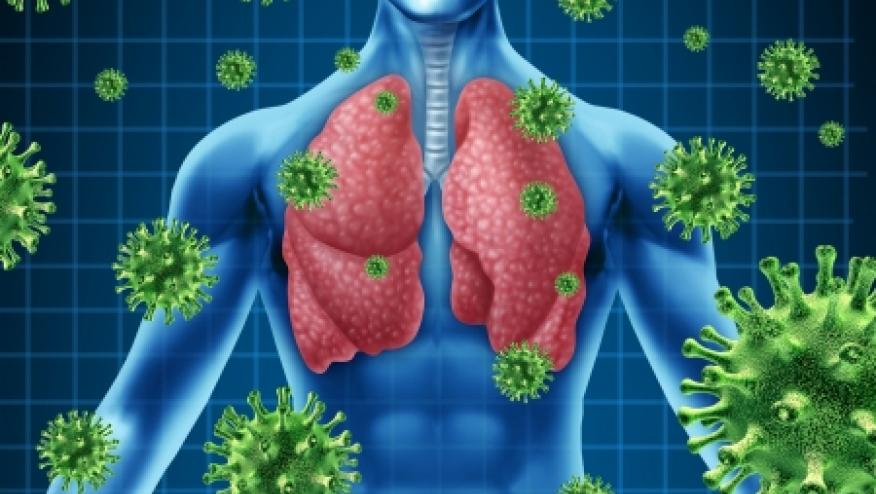Myositis Patients at High Risk of Opportunistic Infections Save

Among patients with systemic rheumatic diseases, the highest incidence of opportunistic infections was seen in those with polymyositis/dermatomyositis (PM/DM), Taiwanese researchers found.
In a nationally representative cohort study, the incidence rate for opportunistic infection was 61.3 (95% CI 56.6-66.2) per 1,000 person years for those with PM/DM, followed by 43.1 (95% CI 41.7-44.5) per 1,000 for those with lupus, according to Chun-Yu Lin, MD, of National Cheng Kung University in Tainan, and colleagues.
Lower rates were seen for systemic sclerosis, at 31.6 (95% CI 28.3-35.1) per 1,000; for rheumatoid arthritis, at 25 (95% CI 24.4-25.7) per 1,000; and for primary Sjogren's syndrome, at 24.1 (95% CI 23.1-25.2) per 1,000, the team reported online in Arthritis Research & Therapy.
Infections remain a common cause of hospitalization and death among rheumatic patients, because of their immune abnormalities and frequent requirement for corticosteroids and immunosuppressive drugs. However, most studies examining opportunistic infections have been single-center in design and focused on systemic lupus erythematosus. Little is known about the rates in other autoimmune rheumatic diseases.
Accordingly, Lin and colleagues analyzed data from Taiwan's National Health Insurance Research Database, which includes detailed health information on more than 23 million individuals.
The researchers searched records for diagnostic codes for multiple opportunistic infections including candidiasis, aspergillosis, Pneumocystis jiroveci pneumonia, Cryptococcus infection, cytomegalovirus, tuberculosis, and herpes zoster.
The analysis also included patient characteristics and comorbidities, as well as the time from diagnosis of the rheumatic disease to infection onset.
The investigators identified a total of 76,966 patients with rheumatic diseases enrolled in the database from 2000 to 2013, with the disease breakdown as follows:
- 38,355 with rheumatoid arthritis
- 18,309 with primary Sjogren's syndrome
- 15,961 with lupus
- 2,270 with PM/DM
- 2,071 with systemic sclerosis
For all the diseases, the majority of patients were women, and their ages ranged from a low of 37.2 for lupus to 54.7 in Sjogren's syndrome.
The most common comorbidities were diabetes, hypertension, and dyslipidemia. The highest rate of depression was observed in patients with Sjogren's syndrome, and cancer was seen most often among those with PM/DM.
Corticosteroids were used by all the groups, ranging from 48.7% of those with Sjogren's syndrome to 94.5% of those with PM/DM. Other immunosuppressives frequently used included cyclophosphamide, methotrexate, and azathioprine.
During follow-up, which ranged from 4.5 to 5.9 years, the researchers identified 13,002 episodes of opportunistic infections in 11,554 patients. The most common were candidiasis, herpes zoster, and tuberculosis.
In a Cox regression model adjusted for age, sex, income, and comorbidities, the adjusted hazard ratio for a first opportunistic infection was 18% higher among PM/DM patients than among lupus patients, who were the reference group (HR 1.18, 95% CI 1.08-1.29).
In contrast, compared with the lupus group, lower risks for opportunistic infections were seen in the other rheumatic groups, as follows:
- Systemic sclerosis: HR 0.58 (95% CI 0.51-0.65)
- Rheumatoid arthritis: HR 0.46 (95% CI 0.44-0.48)
- Primary Sjogren's syndrome: HR 0.42 (95% CI 0.39-0.44)
Further analysis revealed that the incidence of opportunistic infections was highest during the first year after diagnosis of the rheumatic disease, diminishing thereafter. For patients in the PM/DM group, the incidence rate of opportunistic infection was 5.4 times higher during the first year compared with after 5 years, which may reflect the use of lower steroid doses later in disease and higher disease activity soon after onset, the team said.
The previous studies that focused on bacterial or opportunistic infections in systemic lupus erythematosus implicated multiple factors, including complement deficiency, low production of interleukin 8, and inadequate chemotaxis and phagocytosis, along with the use of steroids and immunosuppressive medications.
In the current analysis, which found substantially higher rates among PM/DM patients than in the lupus group, several other factors may have contributed, the researchers continued. One major factor, they said, is interstitial lung disease, which has been detected in up to two-thirds of PM/DM patients and which may increase susceptibility to pulmonary infections with Aspergillus and Mycobacterium pathogens.
A second contributor, the team said, may be the high incidence of malignancy reported in the PM/DM patients; in the current analysis, cancer was reported as a comorbidity in 12.3% of that group, compared with 4.6% of lupus patients. This could influence the rates of opportunistic infection through the use of cytotoxic cancer drugs, Lin and co-authors said.
They concluded: "These findings highlight the importance of monitoring for opportunistic infection development during the treatment of these autoimmune rheumatic diseases, especially for patients with PM/DM."
A limitation of the study, the researchers said, was the lack of information in the database on disease activity or severity.
The study was funded by the National Cheng Kung University Hospital in Tainan, Taiwan.
The authors reported no financial conflicts.










If you are a health practitioner, you may Login/Register to comment.
Due to the nature of these comment forums, only health practitioners are allowed to comment at this time.